Introduction
The use of cover crops for erosion control and provision of nutrients for the next crop is more than 2,500 years old. Ancient Greek and Roman sources suggested growing cover crops to produce green manure for vineyards and other crops. However, in the past century, there has been a trend to disregard the role of cover crops in increasing soil organic matter in crop production. Meanwhile, the use of commercial chemical fertilizers for crop production has greatly increased. Inorganic or mineral fertilizers do not add organic matter to the soil and therefore do not contribute to soil health. The gradual decline in soil organic matter associated with continuous tillage, particularly in the extremely sandy soils of Florida, may lead to a decrease in crop vigor, yield, and quality.
Appropriate use of cover crops may reduce dependence on fossil fuels by partially replacing chemical fertilizer usage; it may also decrease soil erosion and increase crop yields. Moreover, cover crops may have a slow release of nutrients, reducing potential nutrient leaching. Their use may also sustain or enhance soil organic matter content. This is critical on many Florida soils, especially sandy soils, which typically have low inherent soil fertility, do not retain much water or nutrients, and are often prone to excessive nutrient leaching losses. Whether cash crops are produced organically or conventionally, use of cover crops or green manures in a management plan, preferably with conservation tillage, will provide numerous benefits and some challenges.

Credit: Ramdeo Seepaul, UF/IFAS
This publication aims to help growers and researchers understand the role of cover crops in improving soil health. The document provides recommendations on managing cover crops and describes the benefits of growing cover crops.
Cover crops shield the soil from sunlight, wind, and heavy rainfall, thus improving soil structure, water infiltration, and root penetration while enhancing soil microbial communities. Additional benefits include reduced soil crusting, soil erosion, runoff, and nutrient leaching. Cover crops enhance soil fertility via improved nutrient retention and cycling, while leguminous cover crops add nitrogen fixed from the atmosphere. A cover crop is referred to as a green manure crop if the residue remains on the soil surface or is incorporated in the soil; in such instances, crops should be selected that produce large quantities of biomass and also contain adequate amounts of nutrients in the correct proportions. Cover crops are often used in strip-till operations by row crop farmers to gain the benefits of surface residues and are more beneficial in the long run.
From the standpoint of supplying plant nutrients in a readily available form, commercial chemical fertilizers are a convenient source. Nutrient content and release rates tend to be predictable and fast (except for slow-release fertilizers). However, prices can be volatile. Most organic amendments are bulky, and transportation or application of these could be cost and time prohibitive. On the other hand, cover crops may provide an affordable on-site management option to enhance inherent soil fertility and soil organic matter. Although chemical fertilizer materials are easy to store, apply, and manage, they do not add to soil organic matter except by adding enhanced plant residues over a period of time.

Credit: Danielle Treadwell, UF/IFAS
Potential Benefits and Challenges
Many cover crops will fulfill several of the purposes listed below. For example, a crop that will produce enough growth to outcompete weeds should produce enough biomass to sustain and/or improve soil organic matter content.
- To control weeds, because cover crops compete for light, water, and nutrients;
- To prevent soil losses associated with heavy rainfall (soil water erosion);
- To reduce soil losses due to strong winds (e.g., prevent soil wind erosion and a potential "dust bowl") and to protect more sensitive crops such as watermelon from sandblasting damage;
- To scavenge and retain nutrients that might otherwise be lost in water runoff or leaching during the off-season. This helps reduce fertilizer costs for future crops and also protects the environment from problems caused by nutrient loading in our watersheds;
- To reduce populations of specific soil pathogenic nematodes;
- To generate supplemental income (e.g., via hay production or grazing);
- To form a suitable mulch cover for row middles and/or mulched beds;
- To provide habitat for beneficial birds and insects and enhance soil microbial populations.
Although cover crops provide many benefits, some may also be excessively tall, woody, and/or weedy. They can also interfere with planting, cultivation, or harvesting, while others may harbor pests and diseases. Consequently, the selection of the right cover crop for a particular situation is critical.
Cover Crop Classification
One of the main issues to consider when choosing a cover crop is the season or period in which it will be needed. We can differentiate between crops that are short-lived (annual cover crops such as winter rye [Secale cereale] and carinata [Brassica carinata]) vs. crops that can remain for many years (perennial crops such as bahiagrass [Paspalum notatum] and perennial peanut [Arachis glabrata]). Annual cover crops can be categorized into two main classes: crops that are adapted to cool, short days (winter cover crops such as hairy vetch [Vicia villosa] and carinata); and those that are adapted to hot, long days (summer cover crops such as cowpea [Vigna unguiculata]). We can further differentiate between grass/grain vs. leguminous cover crops. Table 1 presents an overview of available cover crops within each of these groups and their performance in terms of biomass and nitrogen (N) production.
Initially, leguminous crops tend to grow slower than grass/grain crops and may not produce as much seasonal biomass, but they may add 60–200 lb N/ac per cropping season. Legumes can symbiotically associate with soil bacteria (Rhizobium or Bradyrhizobium) that fix atmospheric nitrogen. Therefore, if an appropriate inoculant is used or sufficient symbiotic N-fixing bacteria are present in the soil, no supplemental N fertilizer is necessary to produce abundant biomass. Legumes usually have superior N concentration, and the biomass decomposes faster than grass/grain crops. Legume inoculants are readily available and relatively inexpensive, and seed inoculation is a recommended management practice.
Summer cover crops tend to generate more biomass than cool-season crops when cultivated with adequate soil moisture, fertility (especially phosphorus), and a suitably high (6.0–6.5) soil pH. Cool-season legumes often do not perform well on sandy soils during the first years of cultivation. In contrast, many warm-season annual leguminous crops listed in Table 1 tend to be more vigorous and require additional management.
Cover Crop Establishment
Cover crops can be grown in pure or mixed stands. Most annual cover crops need to be established yearly, but some may reseed naturally (e.g., alyceclover, iron/clay cowpea, and hairy indigo). Reseeding types may be preferable for ground covers in orchard systems because they may reduce replanting costs. However, in other systems, they may become weeds and need to be suppressed in a timely manner to prevent problems. Table 1 outlines an overview of suggested seeding rates.
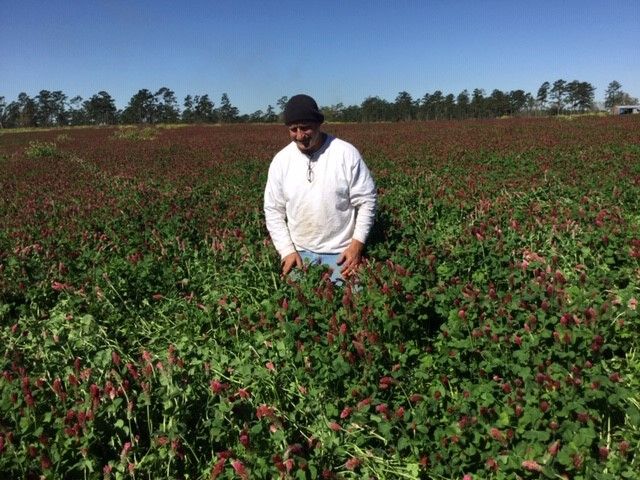
Credit: Joel Love, UF/IFAS
Cover crops can be planted in rows spaced 8–24 inches apart, or broadcast. The use of narrower row spacings will hasten initial ground cover and will be more effective for weed suppression. Cover crops may be grown in rotation with various cash crops or as a temporary or permanent ground cover (living mulch) between trees and citrus groves. Perennial species need to be established only once and provide a continuous ground cover. Perennial crops that are propagated asexually by sprigs may be more costly unless on-farm equipment and plant material are available. Perennial peanut establishes slowly and usually takes 1–3 years to obtain a satisfactory ground cover. Some cover crops may be maintained as a living mulch, harvested as hay, or incorporated into the soil once they reach maturity. Depending on the seed rate and seed cost, establishment costs are roughly $60–$150/acre for annual cover crops and $160–$400/acre for perennial cover crops. Cover crops are typically most cost-effective if one crop fulfills multiple needs. Winter cover crops for summer row crops, such as corn, cotton, peanuts, etc., need to be chosen to fit the planting date for the summer crops. They also need to have benefits for suppressing nematodes, ease of strip-till planting into the cover, and various other ecosystem service benefits.
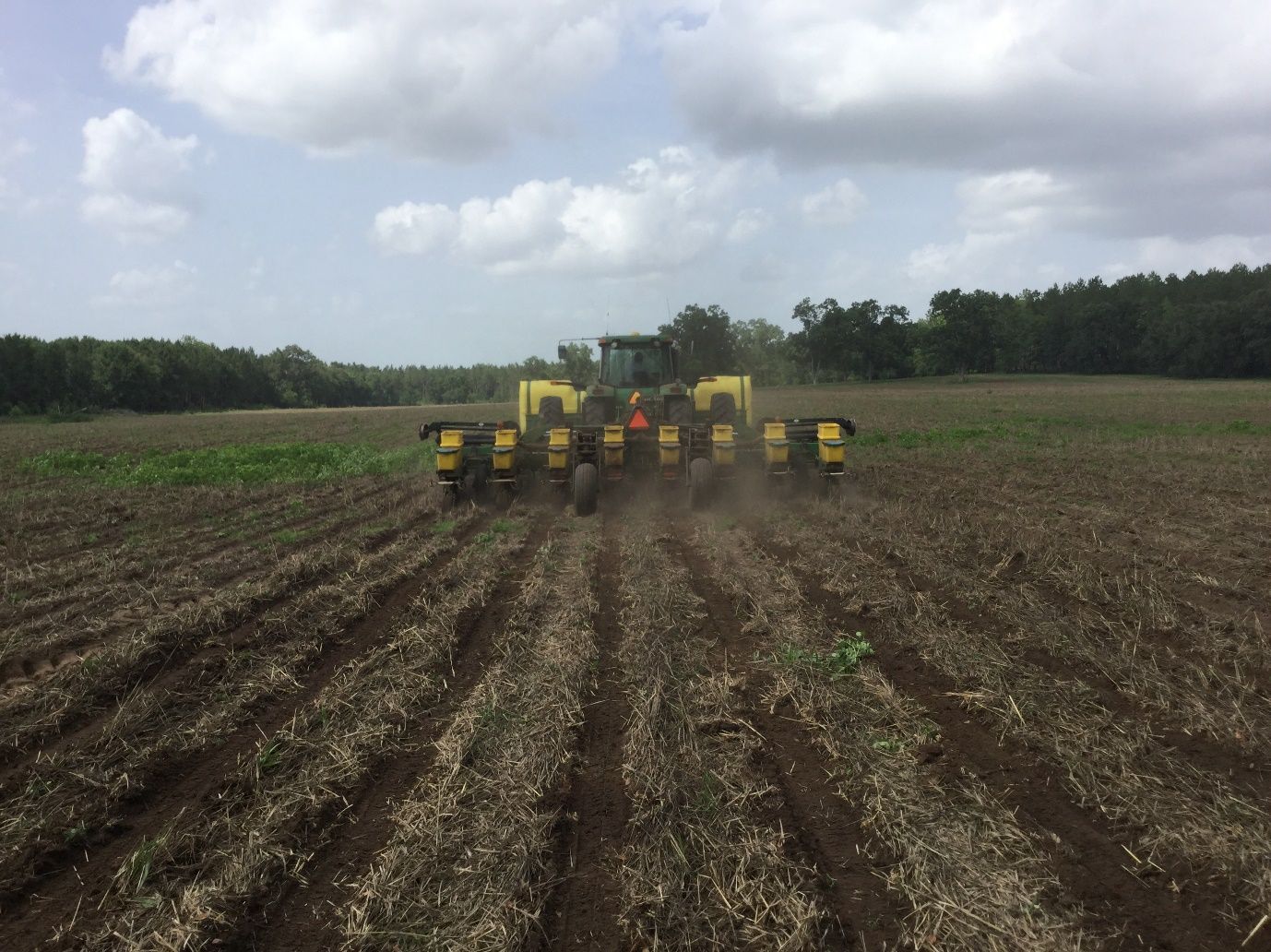
Credit: Joel Love, UF/IFAS
Improving Soil Health
Benefits of Soil Organic Matter
Cover crops increase soil organic matter by adding biomass to the soil. Legume crops can increase soil organic matter levels by 8% to 114% (SARE 2017). Non-legume cover crops, including grasses and brassicas, can increase soil organic matter levels by 4% to 62% (SARE 2017). Increasing soil organic matter enhances the capacity of the soil to store nutrients and water. Almost all of the nitrogen and much of the soil phosphorus and sulfur reside in the organic matter. Soil organic matter increases the soil cation exchange capacity, enhancing the ability of soil to hold macronutrients such as potassium, calcium, and magnesium. Micronutrients, such as iron, zinc, copper, manganese, and molybdenum, form complexes with organic matter, increasing their availability for plant uptake. Organic matter provides carbon as energy for microorganisms that help make many soil nutrients more available through mineralization processes. The high buffering capacity of soil organic matter lessens the stress in the plant caused by improper fertilization. Organic matter increases soil water-holding capacity in sandy soils and improves water percolation in heavy clay soils. Physical properties of the soil are also affected; soil organic matter stabilizes soil structure, thereby improving soil tilth.
In general, well-managed perennial pastures can accumulate soil organic matter due to superior herbage accumulation and slow decomposition of the residue in the soil. Although annual crops may also generate a lot of biomass, frequent tillage may partially offset soil organic matter gains associated with adding plant material to the soil.
Some legumes, such as sunn hemp, sesbania, aeschynomene, and hairy indigo, produce very fibrous or woody stems if grown to full maturity. Woody stems are not considered a serious problem for agronomic crops because they are quite brittle and can be easily shredded with a tractor-powered rotary mower. However, these stems may sometimes interfere with bed formation in commercial horticultural crop fields, and it is important to mow the crop before the stems become overly woody. Also, the residue tends to decompose more slowly and may initially tie up (immobilize) nutrients, thereby temporarily hampering nutrient availability for subsequent commercial crops.
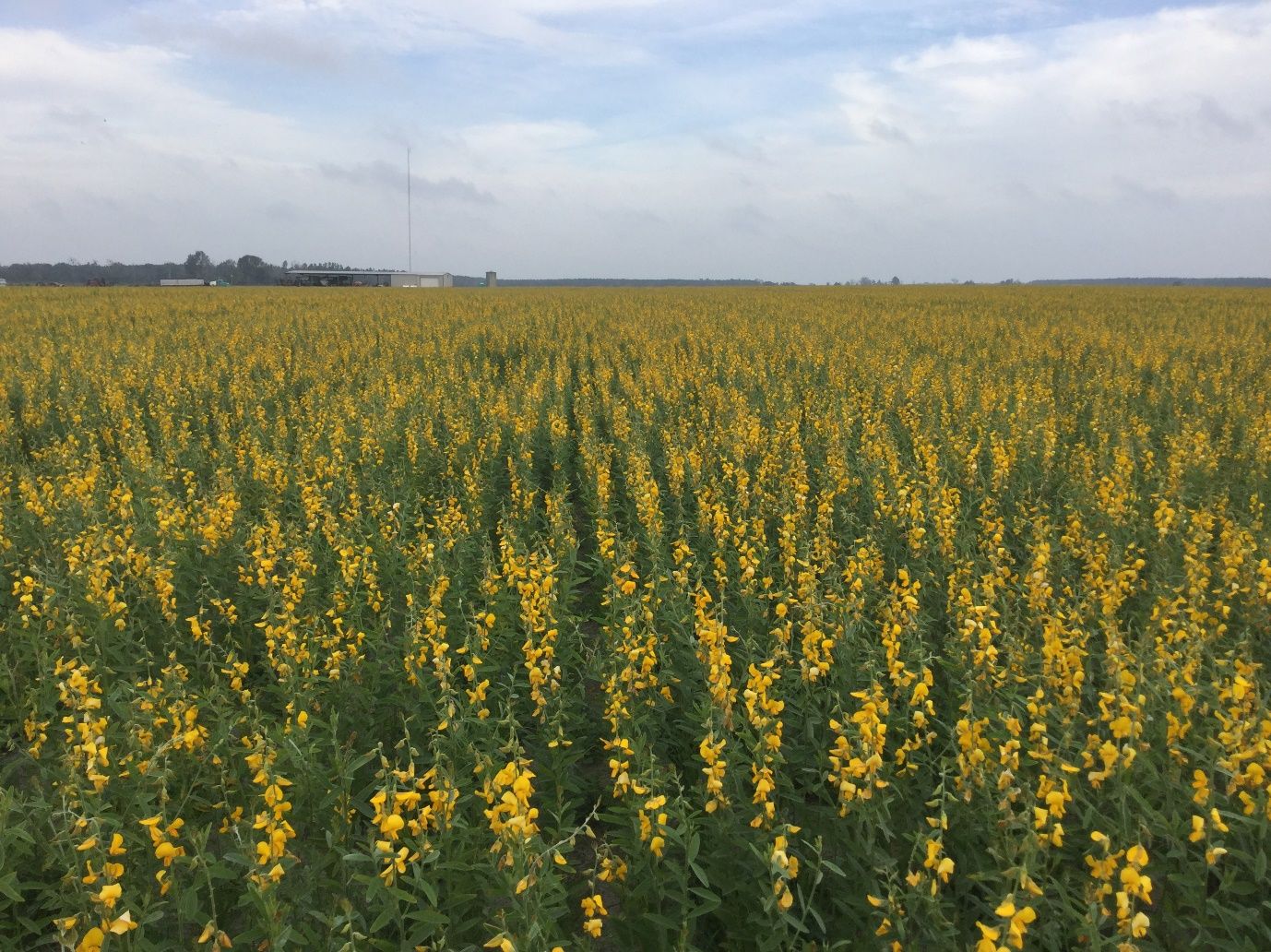
Credit: Joel Love, UF/IFAS
Matching Cover Crop Nutrient Release with Crop Nutrient Demand
Because nutrient release from organic materials is controlled by biological processes and climatic conditions, it is less predictable than chemical fertilizers. Firstly, it is difficult to determine how much cover crop will be produced and its corresponding nutrient content. Secondly, it is difficult to determine how fast this material will decompose and mineralize in the soil. However, some basic guidelines may help streamline the process of matching nutrient release from cover crops with the nutrient demand of subsequent commercial crops.
The amount of biomass produced by a cover crop depends on the plant species, the soil fertility level, the amount of rain and residual soil moisture, the length of its growing season, the soil type, and possibly several other factors. Grass and grain cover crops usually produce more biomass than legumes under adequate fertility levels. Because grass herbage is generally lower in nitrogen content than legumes, it decomposes more slowly. Crops planted soon after large amounts of biomass have been incorporated into the soil may require additional nitrogen fertilizer to prevent nitrogen immobilization, which robs the subsequent crop of needed nitrogen.
Mixing a grain cover crop with a leguminous (e.g., 30% hairy vetch-70% winter rye mix) may be desirable to balance biomass accumulation (grass) and nitrogen fixation (legume). Additionally, the residue tends to decompose faster than grass-only, thus reducing the risk of nitrogen immobilization.
Timing and Depth of Residue Incorporation
In north Florida, using a summer cover crop such as sunn hemp may not benefit a spring crop such as sweet corn, because most of the N may be lost due to leaching between the time the sunn hemp is terminated and the corn crop is planted. In this case, nitrogen benefits are relatively small (< 30%). In south Florida, on the other hand, sunn hemp can be directly followed by a commercial fall vegetable crop. In this case, the nitrogen from the crop residues can be used much more efficiently, and N fertilizer rates may be reduced by 50% to 75%. In some cases, the time of optimal biomass production of the winter cover crop (mid-April) may be later than the optimal time of planting for the summer crop. In north Florida, some crops may die naturally as the spring proceeds, and intercropping may be an option. Other crops may be aggressive and might require herbicide application and/or mowing prior to planting to prevent potential competition. Cover crops with a tendency for "weediness" should be mowed in a timely fashion.
Using minimum or conservation tillage tends to slow residue decay and promotes the buildup of a residue layer on top of the soil. Although minimum tillage may reduce soil organic matter losses, it may also require specific weed control protocols and special seeding equipment. However, most modern equipment has been developed for situations with high residue.
Although a grain crop such as winter rye does not add supplemental N to the soil, it can be more efficient in mining other nutrients from deeper soil layers and thus may improve lower-quality soils. Fast-growing and deep root systems enhance a plant's ability to mine or recover scarce soil nutrients, while deep-rooted plants may also increase soil organic matter at greater depths. Pearl millet and sorghum-sudangrass hybrids usually develop deeper root systems than cool-season grasses, while bahiagrass also tends to mine lower soil layers (the spodic horizon) for nutrients, including phosphorus. The depth of the water table and the distribution of plant nutrients throughout the soil profile will influence this activity. The greatest root activity and growth will be in areas of optimum soil moisture, soil air, and plant nutrient concentrations.
Erosion Control
Cover crops shade the soil (which reduces weed germination) and compete with weeds for light, water, and nutrients. Where weed control is important, a cover crop should germinate quickly and develop a rapidly growing and dense canopy that can effectively "shade out" weeds. Some crops, such as winter rye (Adhikari et al. 2018) and sunn hemp (Skinner et al. 2012), also produce allelochemicals that hamper weed germination. For erosion control, a cover crop should establish quickly and form both a solid ground cover and an extensive root system.
Pest and Weed Control
One of the issues with cover crops is their potential to become pests. This is particularly risky if they produce seeds, which could germinate and create a weed problem in subsequent crops. With iron clay cowpea, this may be a problem in vegetable systems unless it is mowed before it sets seed. For the millets and sorghum-sudangrass hybrids, this may involve one or more mowings during the summer. Whether mowing is required will depend on how long the cover crop is allowed to grow, the maturity rating of the variety being used, and the subsequent commercial crop that is planned. Some late-maturing varieties of sorghum or sorghum-sudangrass may not flower before they are removed or destroyed. It may also be possible to purchase seeds of a variety that is sterile and/or will not produce seeds, as is the case for sunn hemp. Some varieties of pearl millet and sorghum-sudangrasses will produce seed heads 6–8 weeks after planting. If these seed heads are mowed off, new ones will be produced in about a month. With a March planting, four to five mowings will be required to entirely prevent seed formation before the cover crop is destroyed in August or September.
Most legumes do not produce an abundance of seeds until late in the growing season, so the risk of germination is not as severe. With the exception of cowpea and hairy indigo, most cover crops are not a problem for the succeeding crop. The legumes mentioned require 60 (cowpea) to 100 days (hairy indigo) to produce viable seeds. Practically all of them will produce seeds in the early fall months, whether they are mowed or not. Sometimes, seeds develop on stems growing more prostrate along the ground. Vegetable growers using the full-bed plastic mulch system should guard against planting legumes with a high percentage of hard seeds, such as alyceclover, hairy indigo, or white clover. The hard seed of these legumes will lie dormant in the soil for months or even years, and then germinate when the vegetable crop is planted. Hairy indigo has become a major weed in many fields after being grown as a cover crop.
Winter rye, carinata, sunn hemp, velvet bean, and hairy indigo may reduce nematode populations. Clovers, lupine, sesbania, and vetch tend to be nematode hosts. Because many types of pests require different hosts, a cover crop should be a non-host plant for pests, insects, diseases, and nematodes that attack the cash crop (e.g., nematodes affecting alyceclover do not attack citrus trees). As a general rule, use a grass cover crop before growing a broadleaf cash crop, and use a broadleaf cover crop before growing a grass crop such as corn. Note that mixtures of cover crops may enhance microbial communities more than a single cover crop.
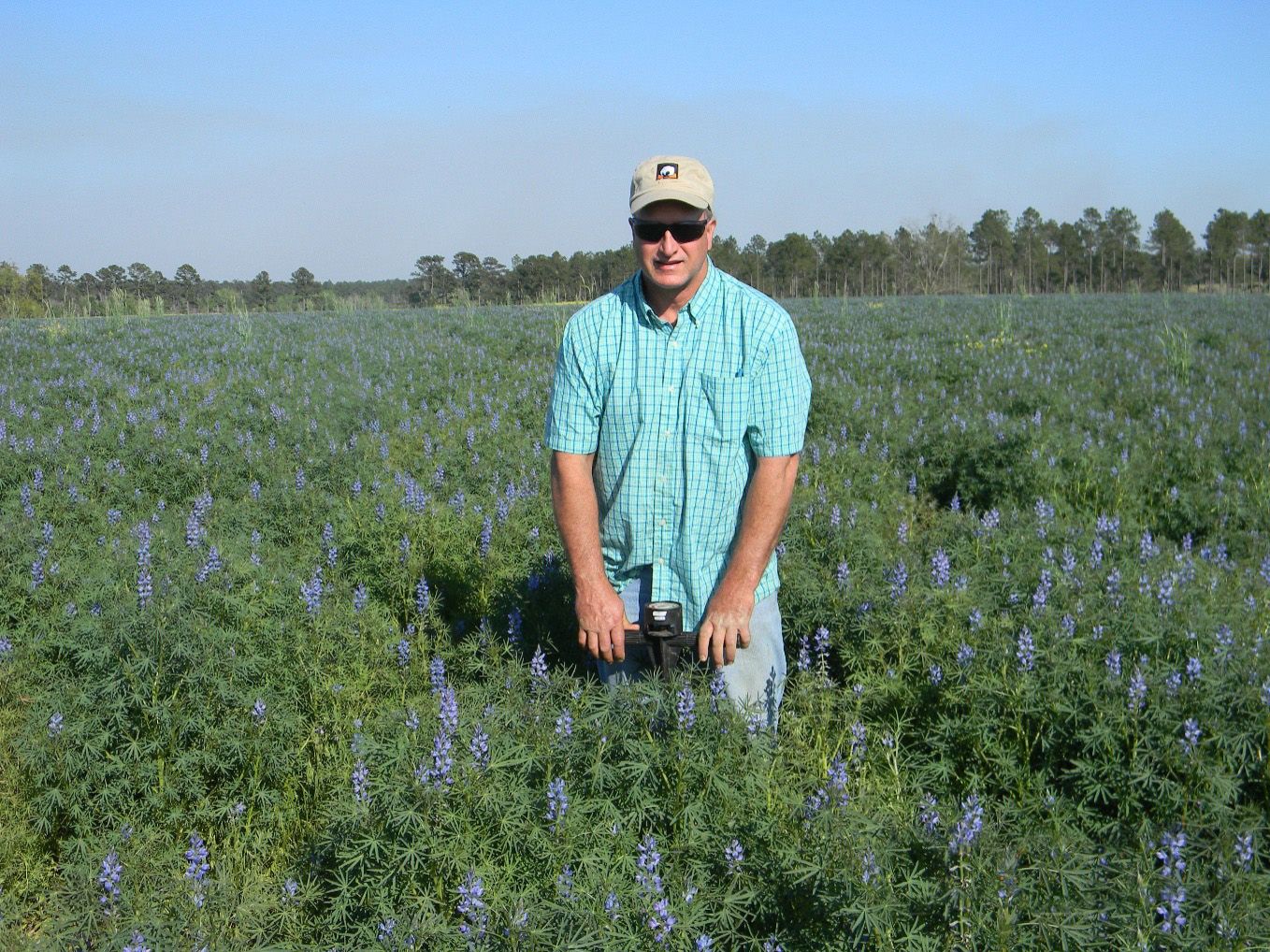
Credit: Joel Love, UF/IFAS
Conclusions
A key challenge to the widespread adoption of cover crops is finding the right cover crop(s) that can be readily sourced at a reasonable price and then planted on time to maximize crop nutrient accumulation and match the demands of a succeeding commercial crop for nutrient release. Cover cropping was integral to past farming practices in Florida. Therefore, it may be worthwhile to leverage the experience and knowledge of experienced farmers in your region who farm similar soils and have successfully used cover crops. There is no perfect cover crop for every situation. Finding the best cover crop to address specific needs may require patience and experimentation with crops, crop combinations, and management practices. Using appropriate planting equipment (e.g., crimpers or flail mowers) and/or herbicides may facilitate improved cover crop benefits. The use of multiple species can further enhance the adaptability and performance of a cover crop system. This is especially important when growth conditions are less favorable for one species in the mix (e.g., inadequate and variable soil fertility and unpredictable weather conditions). In this case, plant types should be chosen that complement each other rather than compete. The crops listed in Table 1 can supply large amounts of material to contribute to the soil’s organic matter. A more comprehensive and detailed review of cover crops and green manure can be obtained from the references listed below.
Cover crops may improve soil quality and fertility for the succeeding cash crop. They can be used for grazing, hay, or seed production, and provide environmental benefits by minimizing soil and water erosion and nutrient loss.
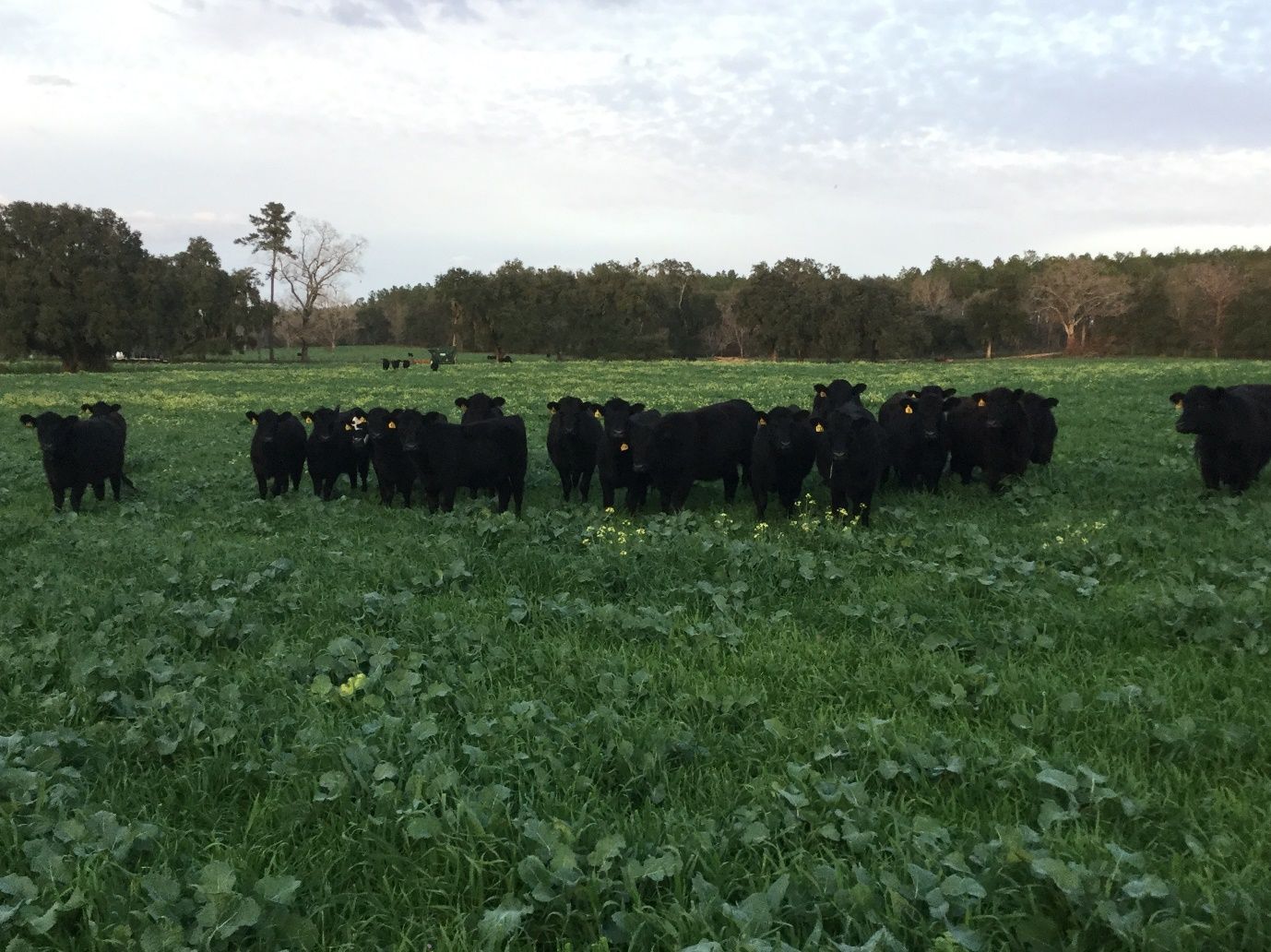
Credit: Joel Love, UF/IFAS
References and Further Reading
Adhikari, L., M. Mohseni-Moghadam, and A. Missaoui. 2018. “Allelopathic Effects of Cereal Rye on Weed Suppression and Forage Yield in Alfalfa.” American Journal of Plant Sciences 9:685–700. doi: 10.4236/ajps.2018.94054.
Cherr, C. M., J. M. S. Scholberg, and R. McSorley. 2006. "Green Manure Approaches to Crop Production: A Synthesis." Agronomy Journal 98:302–319.
Li, Y., E. A. Hanlon, W. Klassen, Q. Wang, T. Olczyk, and I. V. Ezenwa. 2006. Cover Crop Benefits for South Florida Commercial Vegetable Producers. SL242. Gainesville: University of Florida Institute of Food and Agricultural Sciences. https://edis.ifas.ufl.edu/publication/ss461
Skinner, E. M., J. Diaz-Perez, S. Phatak, H. H. Schomberg, and W. Vencill. 2012. “Allelopathic Effects of Sunnhemp (Crotalaria juncea L.) on Germination of Vegetables and Weeds.” HortScience 47(1): 138–142.
Sustainable Agriculture Research and Education (SARE). 2017. “Cover Crops at Work: Increasing Soil Organic Matter.” Cover Crop Resource Series.
Sod rotation at http://nfrec.ifas.ufl.edu/programs/sod_rotation.shtml
Table 1. Cover crops for use in Florida.